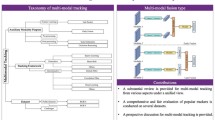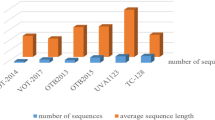Abstract
Wireless Visual Sensor Networks (WVSNs) have gained significant importance in the last few years and have emerged in several distinctive applications. The main aim is to design low power WVSN surveillance application using adaptive Compressive Sensing (CS) which is expected to overcome the WVSN resource constraints such as memory limitation, communication bandwidth and battery constraints. In this paper, an adaptive block CS technique is proposed and implemented to represent the high volume of captured images in a way for energy efficient wireless transmission and minimum storage. Furthermore, to achieve energy-efficient target detection and tracking with high detection reliability and robust tracking, to maximize the lifetime of sensor nodes as they can be left for months without any human interactions. Adaptive CS is expected to dynamically achieve higher compression rates depending on the sparsity nature of different datasets, while only compressing relative blocks in the image that contain the target to be tracked instead of compressing the whole image. Hence, saving power and increasing compression rates. Least mean square adaptive filter is used to predicts target’s next location to investigate the effect of CS on the tracking performance. The tracking is achieved in both indoor and outdoor environments for single/multi targets. Results have shown that with adaptive block CS up to 20 % measurements of data are required to be transmitted while preserving the required performance for target detection and tracking.


















Similar content being viewed by others
References
Akyildiz IF, Melodia T, Chowdhury KR (2007) A survey on wireless multimedia sensor networks. Comput Netw 51:921–960
Asif MS, Fernandes F, Romberg J (2013) Low-complexity video compression and compressive sensing. In: Asilomar Conference on Signals, Systems, and Computers
Baraniuk R (2007) Compressive sensing. IEEE Signal Proc Mag 118–124
Bae TW, Zhang F, Kweon IS (2012) Edge directional 2d lms filter for infrared small target detection. Infrared Phys Technol, Sciencedirect 55(1):137–145
Candes EJ (2006) Compressive sampling. In: Proceedings of the International Congress of Mathematicians
Candes EJ, Wakin MB (2008) An introduction to compressive sampling IEEE Signal Proc Mag pp. 21–30
Caviar datasets (2001) Dataset: EC Funded CAVIAR project/IST 2001 37540, http://homepages.inf.ed.ac.uk/rbf/CAVIAR/
Cevher V, Sankaranarayanan A, Duarte M, Reddy D, Baraniuk R, Chellappa R (2008) Compressive sensing for background subtraction
Charfi Y, Canada B, Wakamiya N, Murata M (2009) Challenges issues in visual sensor networks. In: IEEE on wireless Communications pp. 44–49
Cheng F, Chen Y (2006) Real time multiple objects tracking and identification based on discrete wavelet transform. Elsevier Pattern Recognition Journal 39:1126–1139
Diniz PSR (1997) Adaptive Filtering. The Springer International Series in Engineering and Computer Science, vol. 399, ch. The Least-Mean-Square (LMS) Algorithm, pp. 79–135
Dhull S, Arya S, Sahu O (2010) Performance variation of lms and its different variants. Int J Comput Sci Secur, (IJCSS):4
Donoho D (2006) Compressed sensing. IEEE Trans Inf Theory 52(4):1289–1306
Efford N (2000) Digital Image Processing: A Practical Introduction Using JavaTM. Pearson Education, ch. Morphological image processing
Haupt J, Nowak R (2006) Compressive sampling vs. conventional imaging. In: IEEE International Conference on Image Processing, pp. 1269–1272
Haykin S (2002) Adaptive filter theory. Prentice Hall, vol. 0-13-048434-2, ch. Least mean square adaptive filters, pp. 231–247
Hormati A, Roy O, Lu YM, Vetterli M (2010) Distributed sampling of signals linked by sparse filtering: theory and applications. IEEE Trans Signal Process 58(3):1095–1109
Hsia C-H, Yeh Y-P, Wu T-C, Chiang J-S, Liou Y-J (2010) Low resolution method using adaptive lms scheme for moving objects detection and tracking. In: 2010 International Symposium on Intelligent Signal Processing and Communication Systems (ISPACS), pp. 1–4
Huang HC, Chang FC (2014) Robust image watermarking based on compressed sensing techniques. Journal of Information Hiding and Multimedia Signal Processing 5(2):275–285
Jebara SB, Besbes H (2003) A variable step size filtered sign algorithm for acoustic echo cancellation. IEEE Electronic Letters 39:936–93
Jiang H, Deng W, Shen Z (2013) Surveillance video processing using compressive sensing. arXiv: 1302.1942
Mahalanobis A, Muise R (2009) Object specific image reconstruction using a compressive sensing architecture for application in surveillance systems. IEEE Trans Aerosp Electron Syst 45(3):1167–1180
Martín EM, Pobil Á. P
Melodia T, Pompili D, Akyildiz IF (2006) A communication architecture for mobile wireless sensor and actor networks. In: 3rd Annual IEEE Communications Society on Sensor and Ad Hoc Communications and Networks, SECON vol. 1 pp. 109–118
Mohanty P, Kabat MR, Patel MK (2012) Energy efficient transmission control protocol in wireless sensor networks. In: Wireless Networks and Computational Intelligence, ser. Communications in Computer and Information Science, vol 292. Springer, Berlin, pp 56–65
MuthuLakshmi MsV (2013) Advanced leach protocol in large scale wireless sensor networks. Int J Sci Eng Res 4(5):248–254
Noyer JC, Lanvin P, Benjelloun M (2004) Non-linear matched filtering for object detection and tracking. Elsevier Pattern Recogn Lett 25:655–668
Parry HS, Marshall AD, Markham KC Region template correlation for the flir target tracking. In: British Machine Vision Conference
Patel HA, Thakore DG (2013) Moving object tracking using kalman filter. International Journal of Computer Science and Mobile Computing, IJCSMC 2(4):326–332
Patsakis C, Aroukatos NG (2014) Lsb and dct steganographic detection using compressive sensing. Ubiquitous International Journal of Information Hiding and Multimedia Signal Processing 5(4):20–32
Pottie GJ, Kaiser WJ (2000) Wireless integrated network sensors. Commun ACM 43(5):51–58
Pudlewski S, Prasanna A, Melodia T (2012) Compressed-sensing-enabled video streaming for wireless multimedia sensor networks. IEEE Trans Mob Comput 11 (6):1060–1072
Ravi A, Rao KR (2011) Performance analysis and comparison of the dirac video codec with h.264/mpeg-4 part 10 avc. International Journal of Wavelets, Multiresolution and Information Processing 09 (04):635–654
Redondi A, Buranapanichkit D, Cesana M, Tagliasacchi M, Andreopoulos Y (2014) Energy consumption of visual sensor networks: Impact of spatio-temporal coverage. IEEE Transaction on Circuits and Systems for Video Technology 24(12):2117–2131
Romberg J (2008) Imaging via compressive sampling IEEE Signal Proc Mag pp. 14–20
Sankaranarayanan AC, Veeraraghavan A, Chellappa R (2008) Object detection, tracking and recognition for multiple smart cameras. Proc IEEE 96(10):1606–1624
Sharif A, Potdar V, Chang E (2009) Wireless multimedia sensor network technology: a survey. In: Proceedings of Industrial Informatics, 7th IEEE International Conference, 2009. INDIN 2009, 606–613
Shebli F, Dayoub I, M’foubat AO, Rivenq A, Rouvaen JM (2007) Minimizing energy consumption within wireless sensors networks using optimal transmission range between nodes. In: IEEE International Conference on Signal Processing and Communications, ICSPC, pp. 105–108.
Simon D (2010) Kalman filtering with state constraints: a survey of linear and nonlinear algorithms. The Institution of Engineering and Technology, Control Theory Applications 4(8):1303–1318
Soro S, Heinzelman W (2009) A survey on visual sensor networks. Hindawi Publishing Corporation, Advances in Multimedia 2009(640386):1–21
Tropp J, Gilbert A (2007) Signal recovery from random measurements via orthogonal matching pursuit. IEEE Trans Inf Theory 53(12):4655–4666
Wang X, Wang S (2007) Collaborative signal processing for target tracking in distributed wireless sensor networks. Elsevier Journal on Parallel and Distributed Computing 67:501–515
Wang X, Wang S, Bi D W, Ma JJ (2007) Distributed peer-to-peer target tracking in wireless sensor networks. MDPI, Open Access Journal on the Science and Technology of Sensors and Biosensors 7 :1001–1027
Wang X, Wang S, Bi D (2009) Distributed visual-target-surveillance system in wireless sensor networks. IEEE Trans Syst Man Cybern 39(5):1134–1146
Wang E, Silva J, Carin L (2009) Compressive particle filtering for target tracking. In: IEEE/SP 15th Workshop on Statistical Signal Processing, SSP, pp. 233 –236.
Winkler T, Rinner B (2014) Security and privacy protection in visual sensor networks: A survey. ACM Comput Surv (CSUR) 47(1)
Yap FGH, Yen HH (2014) A survey on sensor coverage and visual data capturing/processing/transmission in wireless visual sensor networks. Sensors 14:3506–3527
Yazdi HS, Lotfizad M, Fathy M (2006) Car tracking by quantised input lms, qx-lms algorithm in traffic scenes. Vision, Image and Signal Processing, IEE Proceedings 153(1):37–45
Youssef SM, ElFarag AA, Ghatwary NM (2013) Adaptive video watermarking integrating a fuzzy wavelet-based human visual system perceptual model. Multimedia Tools and Applications, Springer
Zhao M, Wang A, Zeng B, Liu L, Bai H (2014) Depth coding based on compressed sensing with optimized measurement and quantization. Ubiquitous International Journal of Information Hiding and Multimedia Signal Processing 5(3):475–484
Zheng Y, Wang H, Guo Q (2012) A novel mean shift algorithm combined with least square approach and its application in target tracking. In: IEEE 11th International Conference on Signal Processing (ICSP), vol 2, pp 1102–1105
Zoubi H. RAL (2013) Video coding and routing in wireless video sensor networks. AASRI Conference on Parallel and Distributed Computing and Systems 5:48–53
Author information
Authors and Affiliations
Corresponding author
Rights and permissions
About this article
Cite this article
Fayed, S., M.Youssef, S., El-Helw, A. et al. Adaptive compressive sensing for target tracking within wireless visual sensor networks-based surveillance applications. Multimed Tools Appl 75, 6347–6371 (2016). https://doi.org/10.1007/s11042-015-2575-8
Received:
Revised:
Accepted:
Published:
Issue Date:
DOI: https://doi.org/10.1007/s11042-015-2575-8




